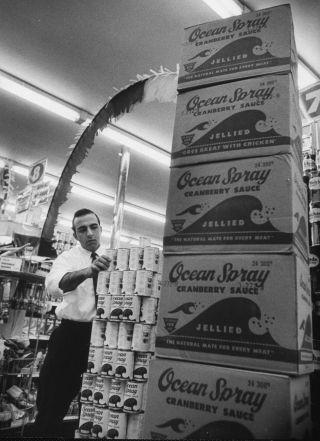Nearly 60 years ago, a government regulation designed to assure the public about the safety our food supply did just the opposite; it set off a panic that was completely unwarranted. Thanksgiving was ruined for millions because the government created an invalid distinction between the natural world and the synthetic one.
The regulation was called the Delaney Clause. In simple form, it said that if a synthetic chemical could be shown to cause cancer in laboratory animals, it must be banned.
No one wants carcinogens so what's the problem with that? There are two. First, politicians in the 1950s had forgotten what peasants in the time of Paracelsus knew: the dose makes the poison, whether it came from nature or not isn't a factor. Second is that rats are not little people, an animal study can only be used to eliminate hazards in humans, it can't find them. Ever.
But the Delaney Clause, technically the 1958 Food Additives Amendment to the 1938 Food, Drug and Cosmetics Act, forgot to account for those concepts. In the real world, a natural chemical or a synthetic chemical are no different: The structure is the same, any effects are the same. But under that amendment if a chemical could be found in nature it was safe, even if it gave cancer to rats, while if it was synthetic it had to be banned, even if in real-world doses it couldn't harm anyone.
Cranberries were the first food to join radiation, tobacco smoke, beta-naphthyalamine (a chemical dye) and soot as carcinogens with "no safe dose" under the law. Just before Thanksgiving in 1959, Arthur Fleming, Secretary of Health, Education and Welfare, the predecessor of the Department of Health and Human Services, announced that FDA had detected traces of the weed killer aminotriazole (C2H4N4), in cranberry products from out west.
Ocean Spray was dutifully concerned, schools threw out their cranberry products, restaurants eliminated it from their menus, First Lady Mamie Eisenhower had to serve applesauce at Thanksgiving and it turned out to be...well, nothing. Yes, aminotriazole sometimes created a thyroid issue which could cause cancer - in rats - but the doses it took to give any rats cancer was equivalent to feeding the critters 15,000 pounds of cranberries every day for two straight years, which is the entire lifetime of a rat. Clearly impossible, even for humans.
The Delaney Clause is no longer with us, it was revoked in 1996, but its legacy remains. Three years after the Cranberry Scare of '59 ruined Thanksgiving, Rachel Carson leveraged concern about pesticides in "Silent Spring" and now her environmental descendants rake in a cool $1 billion a year creating annual cancer scares related to food. The concept that here is "no safe dose" is still evident today in claims about homeopathy and endocrine disrupting chemicals. It's even easier to scaremonger now because testing is a million times more sensitive - we can detect a hazardous chemical in anything. As the famous American Council on Science and Health Holiday Menu shows, ever single food at any Thanksgiving feast, be it organic or conventional, has detectable levels of something found to be a carcinogen in rats.
Yet we should not despair. Thanksgiving ushers in a season of hope, and we can hope this year that government regulators will emerge from 1950s political beliefs about hazard and dose.




